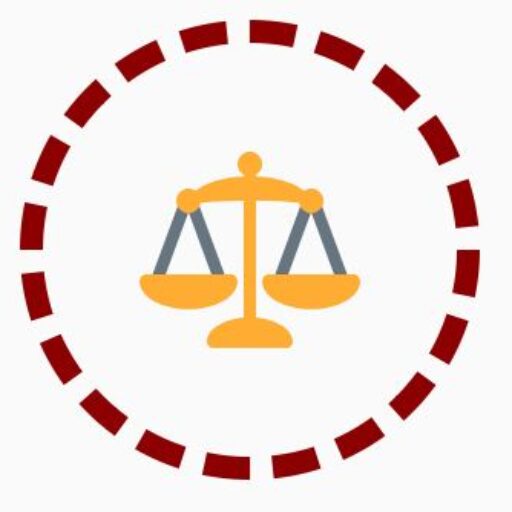Introduction
The Indian government has recently introduced a new law related to “Hit and Run new Law” cases, sparking widespread debate and concern across the country. Many drivers, especially truck and bus drivers, have protested against it, while the public remains curious about its implications. In this blog, we will understand the history, previous laws, and the new changes made under the Bharatiya Nyaya Sanhita (BNS), focusing on the legal, social, and practical angles.

How a Law Becomes Official in India
Every law in India goes through a constitutional process. First, it must be passed by both houses of Parliament—Lok Sabha and Rajya Sabha. Once both houses approve it, the bill goes to the President for assent. After the President’s signature, it becomes law.
Past Legal Provisions for Hit and Run new Law Cases
Hit and run new law cases are not new in India. Earlier, various sections of the Indian Penal Code (IPC) and the Motor Vehicles Act addressed them:
IPC Section 289:
Negligent driving in a public space causing risk to
life or injury could lead to 6 months imprisonment or a fine of Rs. 1000—or both.
IPC Section 304A:
Causing death due to negligent driving could lead to up to 2 years of imprisonment or a fine—or both. In such cases, drivers were usually granted bail easily.
IPC Section 338:
Serious injury (but not death) caused by negligence could result in 2 years of imprisonment or a fine—or both.
These were all bailable offenses, and drivers could often get bail either at the police station or before a magistrate.
Motor Vehicles Act Provisions
Under the Motor Vehicles Act, 1988:
- Section 166: In case of death, compensation of Rs. 25,000; for injury, Rs. 12,500.
- Section 134A: The driver must provide immediate medical help to the injured.
However, a major concern was public outrage at accident sites. Many drivers feared being attacked by crowds if they stayed to help. As a result, many drivers fled the scene, not out of guilt but out of fear.
Why the New Law Was Introduced
According to the Ministry of Road Transport and Highways, over 50,000 people die annually due to road accidents caused by negligent driving. In 2020, the figure crossed 52,000 and touched nearly 57,000 in 2021.
To address this serious issue, the government introduced a new provision: Section 104 of the Bharatiya Nyaya Sanhita (BNS).
New Hit and Run new Law: Key Provisions
Section 104(1):
If a driver causes death due to negligent or reckless driving, even without intent, it will now be treated more severely. The law recognizes it as a grave offense.
- Punishment: Up to 5 years in jail
- Fine: Up to Rs. 7 lakhs
Section 104(2):
If the driver fails to report the accident to police or magistrate and tries to flee the scene:
- Punishment: Up to 10 years in jail
- Fine: Up to Rs. 7 lakhs
Government’s Perspective
The government believes that the new law will act as a deterrent against negligent driving. Given that truck and heavy vehicle drivers are involved in a large number of fatal accidents, the law aims to hold them accountable and promote road safety.
Drivers’ Concerns and the Ground Reality
Many drivers argue that:
- Not every accident is their fault. Sometimes smaller vehicles cut in dangerously.
- Public violence at accident scenes discourages them from helping.
- They earn as little as Rs. 10,000–15,000 per month and cannot afford fines of Rs. 7 lakh.
- If jailed for 10 years due to someone else’s fault, it would ruin their families.
As a result, many truck and bus drivers across India have gone on strike or abandoned their vehicles, fearing this new law could be misused.
The Bigger Picture
While the government’s intention is to reduce accident-related deaths, the law must balance safety with fairness. There needs to be:
- Clear guidelines to identify actual negligence.
- Protection for drivers who genuinely try to help.
- Public awareness to avoid mob attacks at accident sites.
Conclusion
The new hit and run new law under Section 104 of BNS is one of the strictest legal reforms related to road accidents. While the intent is noble, its implementation and fairness will decide its success. As citizens, understanding both the legal structure and the human impact is essential.
Let us hope the government considers all sides and improves the system for both safety and justice.
If you found this blog informative, feel free to share it and comment your thoughts below.
FAQ
Q1. What is the new Hit and Run new law introduced in India?
Ans: The new Hit and Run new law is introduced under Section 104 of the Bharatiya Nyaya Sanhita (BNS). It aims to impose stricter penalties on drivers responsible for causing death or serious injury due to negligent or reckless driving, especially if they flee the accident scene.
Q2. What is the punishment under Section 104(1) of BNS?
Ans: Under Section 104(1), if a driver causes death due to negligent driving, they can face up to 5 years of imprisonment and a fine of up to ₹7 lakhs.
Q3. What happens if a driver runs away after an accident?
Ans: According to Section 104(2), if a driver does not report the accident and tries to escape, they can be punished with up to 10 years of imprisonment and a fine of ₹7 lakhs.
Q4. Why are truck and bus drivers protesting against the new law?
Ans: Drivers argue that the law is too harsh, especially when the accident is not always their fault. They fear being attacked by the public at accident scenes and worry about being unfairly punished or jailed for years.
Q5. What were the previous laws regarding hit and run cases in India?
Ans: Earlier, hit and run cases were dealt with under IPC Sections 304A, 338, and 289, and under the Motor Vehicles Act. These offenses were generally bailable, and penalties included smaller fines and shorter jail terms.
Q6. Is this law applicable only to heavy vehicle drivers?
Ans: No, the law applies to all drivers, including those of private vehicles, motorcycles, and taxis. It is not limited to truck or bus drivers.
Q7. Will this law help reduce road accidents in India?
Ans: That is the government’s goal—to reduce deaths caused by reckless driving. However, its success will depend on fair implementation, clear investigation standards, and protection for responsible drivers.
Q8. What is the difference between Section 104(1) and 104(2)?
Ans: Many fear that without proper checks, the law could be misused against innocent drivers, especially when the accident was not their fault. Legal clarity and fair investigation are essential to prevent such misuse.

